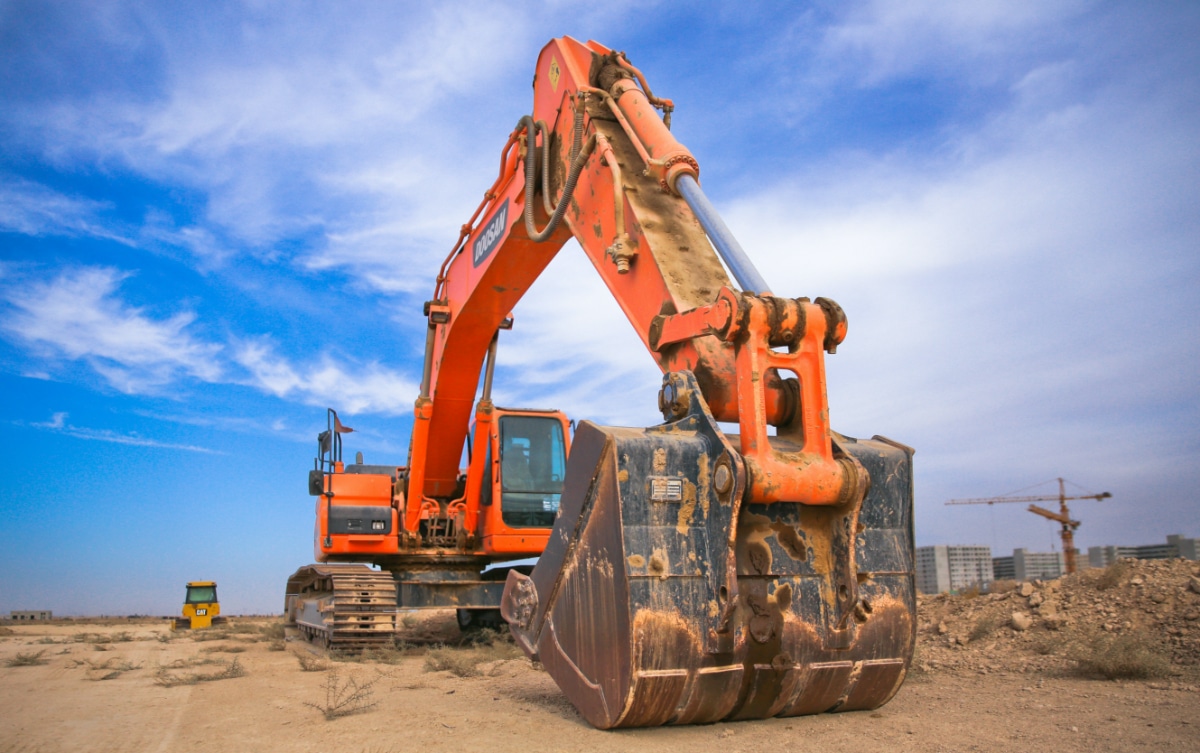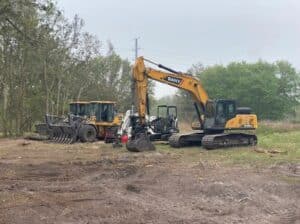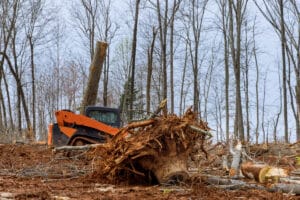Land clearing near lakes, waterways, or wetlands in Florida requires a thoughtful approach to adhere to legal requirements and environmental regulations to achieve successful project outcomes.
Whether you are preparing land for development, creating access paths, or managing vegetation, it’s essential to understand the intricacies involved when working near water.
Read this guide presented by WR Land Management that covers the key aspects of land clearing near water in the Sunshine State.
Florida’s Diverse Aquatic Environment
Florida’s aquatic environments are highly biodiverse and ecologically significant. The amazing mixture of fresh and saltwater ecosystems encompasses rivers, lakes, wetlands, estuaries, and coastal areas.
Every different water habitat in Florida supports a wide variety of species, some of which have protective status, like the Florida manatee. Florida’s complex aquatic systems play a vital role in maintaining water quality by acting as natural filters, trapping sediments, and absorbing pollutants.
Florida’s natural waterways also protect massive land areas from floods and groundwater discharge.
Debris clearing, tree removal, and grading and leveling work all have the potential to significantly damage our state’s water-dependent environment. The work requires expert attention, experience, and proper equipment to prevent sediment runoff, severe erosion, and other disturbances that damage wide-ranging local ecosystems.
Legal Considerations
Florida state and local governments impose strict regulations on land clearing work near water. There are complex permitting requirements enacted by local authorities including Water Management Districts and state agencies like the Florida Department of Environmental Protection.
Many permits impose development restrictions including conditions like maintaining buffer zones, implementing proper soil stability techniques, and managing other environmental impacts.
Additionally, federal laws, including the Clean Water Act, protected designated wetlands. Any development or construction that impacts wetlands requires additional permits which often impose mitigation requirements like restoration or creation of new wetland areas as offsets.
Of course, failure to comply with any of the applicable laws or regulations can result in delays or permanent injunctions against development along with substantial fees and penalties.
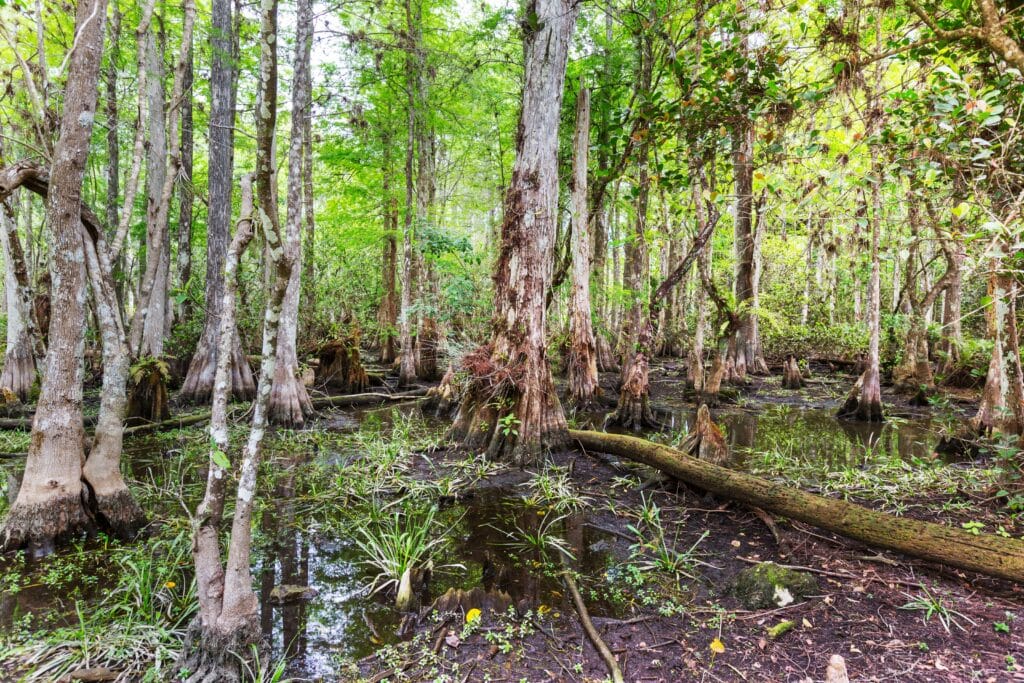
Best Practices for Land Clearing Near Water
Implementing proper procedures during land clearing near water is essential for minimizing environmental impact and ensuring project success.
Professional best practices include:
- Establish buffer zones. Maintain strips of natural vegetation along water bodies to filter out sediments, nutrients, and pollutants that result from development — protecting water quality and wildlife habitats.
- Erosion and sediment control. Use silt fences, sediment traps, and mulch to stabilize soil and prevent erosion. Expert Contouring follows natural slopes to help regulate the speed of water flow to control and minimize erosion.
- Minimize vegetation disturbance. Limit clearing to areas where necessary and avoid disturbing the soil around existing vegetation, which provides a natural anchor for existing soil. Maintaining natural vegetation reduces erosion and manages runoff.
- Stormwater management. Implement practices like retention basins or swales to manage runoff across developed land. This helps control pollutants flowing toward bodies of water.
- Proper timing. Make every attempt to schedule land-clearing work during dry weather to reduce immediate erosion risks.
- Use proper equipment. Select heavy equipment that minimizes soil disturbance, such as tracked vehicles. Whenever possible, use low-impact clearing techniques like selective or hand clearing in especially sensitive areas.
- Revegetation. Promptly replant cleared areas with native plants to stabilize soil and restore natural habitats.
Working With Professionals
Working through the complexities of land clearing near water described above demands a level of expertise that only qualified professionals can provide. Landowners and developers should work with essential experts to make sure that a project — from planning and permitting to execution — proceeds with care and precision.
Some of the professionals typically involved in the process include:
- Environmental consultants. They assess the potential impacts of clearing activities and help develop strategies to minimize environmental damage while ensuring regulatory compliance.
- Engineers and planners. They design land clearing and improvement projects with consideration for the site’s topography and hydrology, incorporating proper erosion control and stormwater management systems.
- Licensed contractors. Experienced professional contractors are experts in handling land clearing near water. They use the appropriate equipment and techniques to minimize environmental disturbances and maintain compliance with permits and regulatory requirements.
- Permitting specialists. These experts assist in navigating the often confusing permitting process, ensuring necessary approvals — maintaining legal compliance and avoiding unnecessary costs and delays.
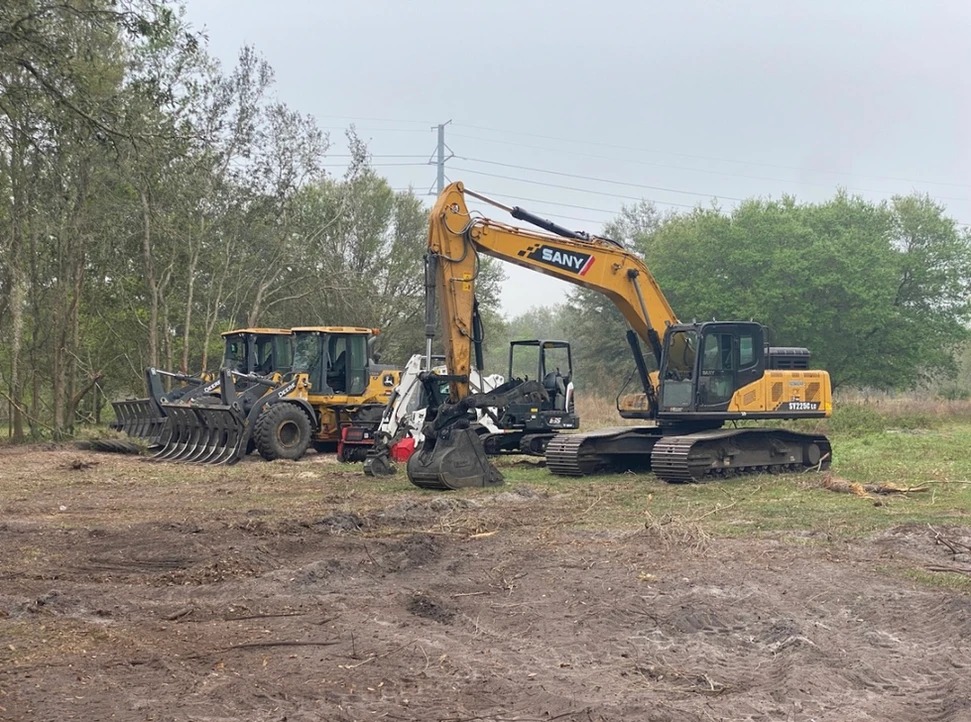
Contact WR Land Development for Professional Land Clearing Services in Florida
Land clearing near water requires careful planning, adherence to legal requirements, and attention to best practices to avoid delays and unnecessary expense. Property owners and developers can minimize those risks by working with experienced and responsible professionals.
If you are in the market for expert land clearing, tree removal, and site preparation in or around New Smyrna, Daytona Beach, or Orlando, contact the team at WR Land Development at (407) 993-1439 to discuss your needs and learn more about our enduring commitment to quality, safety precautions, and environmental stewardship. Reach out now.

